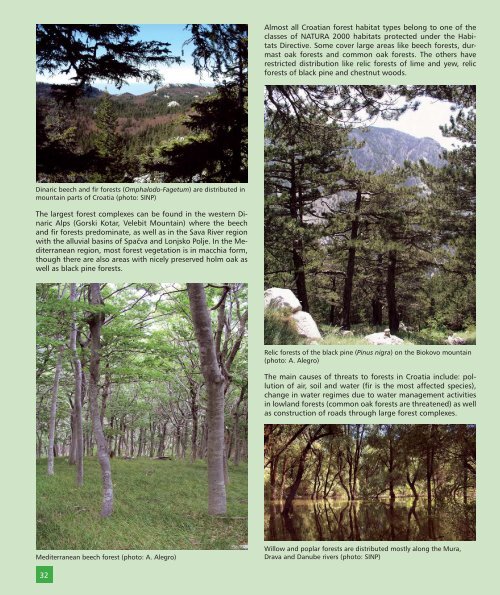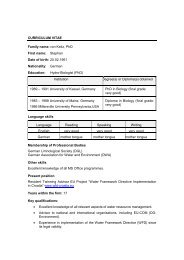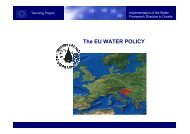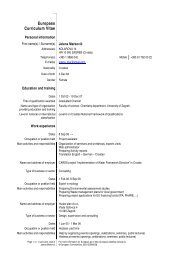BIODIVERSITY OF CROATIA
BIODIVERSITY OF CROATIA
BIODIVERSITY OF CROATIA
You also want an ePaper? Increase the reach of your titles
YUMPU automatically turns print PDFs into web optimized ePapers that Google loves.
Almost all Croatian forest habitat types belong to one of the<br />
classes of NATURA 2000 habitats protected under the Habitats<br />
Directive. Some cover large areas like beech forests, durmast<br />
oak forests and common oak forests. The others have<br />
restricted distribution like relic forests of lime and yew, relic<br />
forests of black pine and chestnut woods.<br />
Dinaric beech and fir forests (Omphalodo-Fagetum) are distributed in<br />
mountain parts of Croatia (photo: SINP)<br />
The largest forest complexes can be found in the western Dinaric<br />
Alps (Gorski Kotar, Velebit Mountain) where the beech<br />
and fir forests predominate, as well as in the Sava River region<br />
with the alluvial basins of Spa~va and Lonjsko Polje. In the Mediterranean<br />
region, most forest vegetation is in macchia form,<br />
though there are also areas with nicely preserved holm oak as<br />
well as black pine forests.<br />
Relic forests of the black pine (Pinus nigra) on the Biokovo mountain<br />
(photo: A. Alegro)<br />
The main causes of threats to forests in Croatia include: pollution<br />
of air, soil and water (fir is the most affected species),<br />
change in water regimes due to water management activities<br />
in lowland forests (common oak forests are threatened) as well<br />
as construction of roads through large forest complexes.<br />
Mediterranean beech forest (photo: A. Alegro)<br />
Willow and poplar forests are distributed mostly along the Mura,<br />
Drava and Danube rivers (photo: SINP)<br />
32









